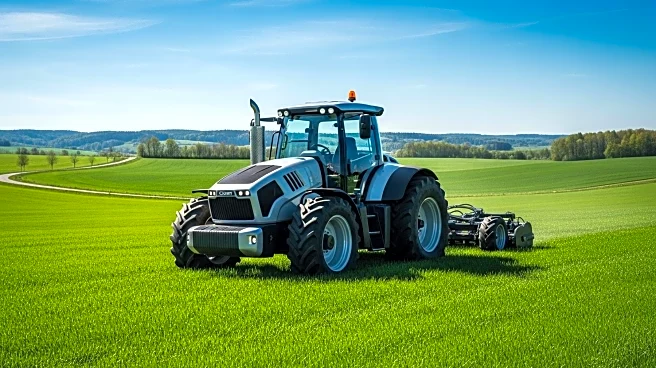What's Happening?
Craig Rupp, CEO of Sabanto, is advocating for the use of autonomous tractors on rural roads, drawing parallels to the acceptance of robotaxis in urban environments. Rupp argues that autonomous tractors can enhance safety and efficiency in agriculture
by reducing human error and fatigue. He highlights the logistical challenges faced during planting and harvest seasons, where labor shortages are common. Autonomous tractors can alleviate these issues by enabling remote management and automation of machinery, thus improving productivity and reducing costs.
Why It's Important?
The implementation of autonomous tractors on rural roads could revolutionize the agricultural industry by addressing labor shortages and improving safety. By standardizing behavior and removing human error, autonomous tractors can reduce the number of accidents involving farm equipment on roads. This technological advancement supports the efficient transport of goods and machinery, which is critical during peak agricultural seasons. The adoption of autonomy in agriculture aligns with broader trends towards automation and smart farming, potentially increasing competitiveness and sustainability in the sector.
What's Next?
The deployment of autonomous tractors on rural roads requires careful consideration of regulatory frameworks and public acceptance. Initiatives like the RAMP pilot in Kansas demonstrate a responsible approach to advancing autonomy in agriculture. As confidence in autonomous technology grows, further expansion and integration into farming operations are expected. Stakeholders, including policymakers and industry leaders, will need to collaborate to ensure safe and effective implementation.
Beyond the Headlines
The shift towards autonomous farming raises questions about the future of agricultural labor and the need for workforce adaptation. As technology replaces certain tasks, there may be a need for retraining and education programs to support workers transitioning to new roles. Additionally, the ethical implications of machine autonomy in agriculture, such as decision-making and accountability, warrant consideration.















